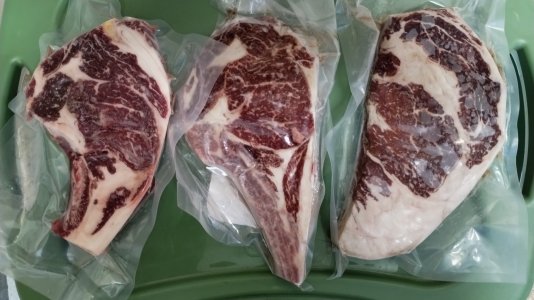Bob-s
Well-known member
Would you compare these three ribeye steaks? They are from 3 different animals. To identify them ... left is A, middle is B and right is C.
For example; best to worst, most to least appealing, amount of fat, marbeling, etc. Tell me what you think. If you have any recommendations how you would change their feed to improve them; for example more corn, less corn?
I have no doubt all three will eat well and taste good. Actually all 3 are in my freezer so I'll let you know.
I appreciate any comments
Bob

For example; best to worst, most to least appealing, amount of fat, marbeling, etc. Tell me what you think. If you have any recommendations how you would change their feed to improve them; for example more corn, less corn?
I have no doubt all three will eat well and taste good. Actually all 3 are in my freezer so I'll let you know.
I appreciate any comments
Bob

